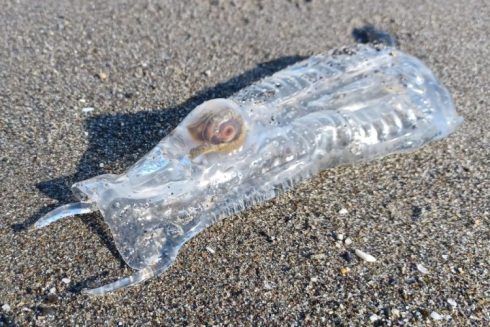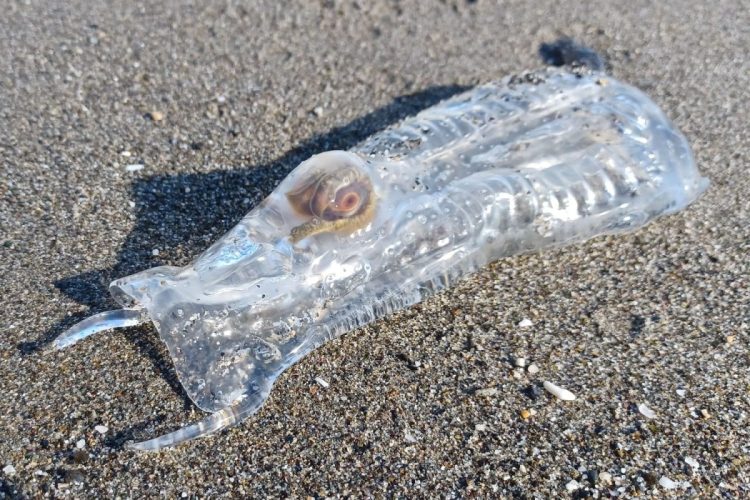BEACHGOERS on the Costa del Sol have recently encountered an unusual sight: thousands of bizarre gelatinous creatures resembling transparent plastic bags washing ashore.
Environmental organisation Ecolocaliza has identified them as salps, a free-swimming marine invertebrate with a transparent barrel-shaped body.
Thousands of them have been discovered along the beaches of Estepona and Sabinillas, prompting people to upload photos to social media, sometimes causing alarm.
However, Ecolocaliza has assured that these creatures are completely harmless and are not to be confused with jellyfish.
There have been calls from the public to gently return these creatures to the sea if found on the beach.
Salps are known for their jelly-like bodies and are an integral part of the marine ecosystem.

They filter feed by pumping water through their gossamer-like tissues, extracting phytoplankton, their primary food source.
The appearance of salps in such large numbers is not entirely unusual.
Their population blooms are often a result of an explosion in phytoplankton – their number one dish – in the sea.
This phenomenon can be influenced by various factors, including warming water temperature, currents, and increased nutrient availability in the water.
For this reason they are sometimes considered an indicator of climate change, as their numbers suggest warming seas and oceans.
Salps are known for their unique reproduction cycle, which can contribute to their sudden appearances in large numbers.
They alternate between sexual and asexual reproductive phases, allowing for rapid population growth under favourable conditions.
While salps are harmless to humans, their presence in large numbers can sometimes indicate changes in ocean conditions.
Scientists often monitor such events as they can provide valuable insights into the health of marine ecosystems and potential environmental shifts.
As for beachgoers on the Costa del Sol, while there is no immediate danger from these gelatinous visitors, it’s always wise to treat all marine life with respect and caution.
READ MORE:
- Is being a bit overweight GOOD for you? British study suggests a few extra pounds can help ‘protect’ the health of elderly people
- ‘This isn’t Benidorm!’: Plans for new Estepona Marina spark criticism from some British expats – but do YOU agree with the backlash?
- Brits flocked to Spain in November with almost 1 million visiting the country in new record: These were the most popular destinations
Click here to read more Costa Del Sol News from The Olive Press.








